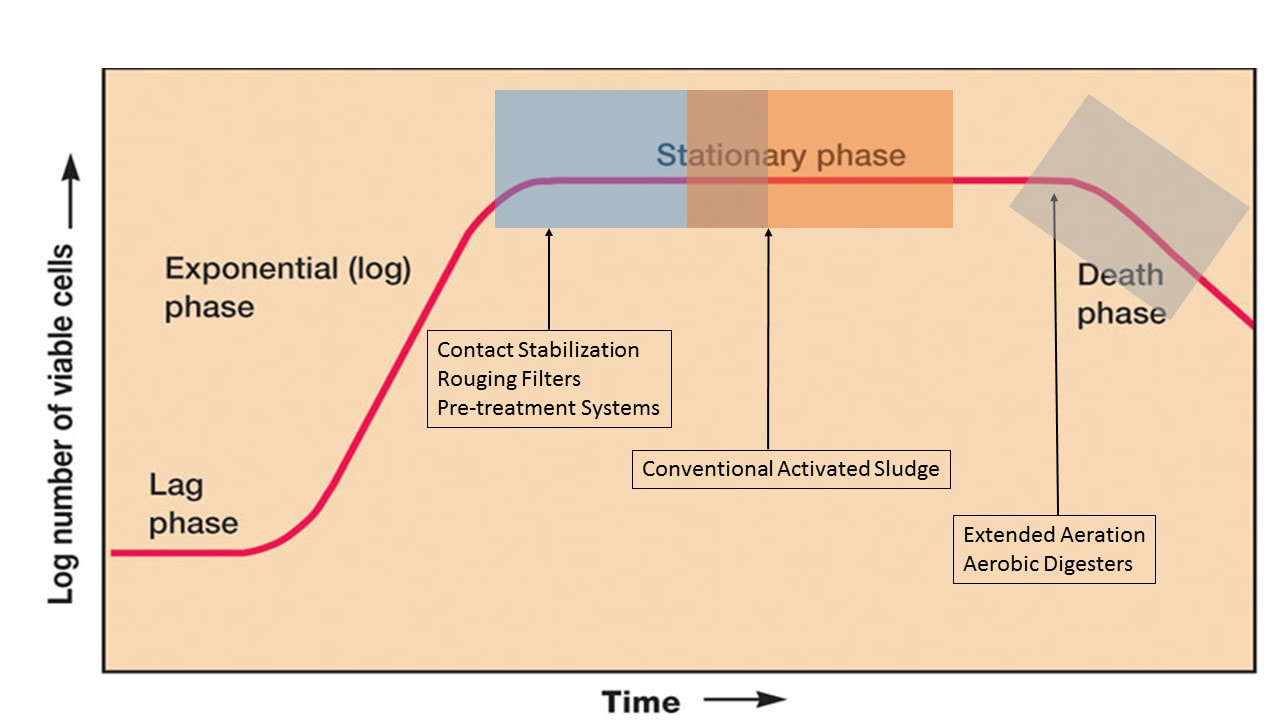Did you know that microbial populations in wastewater are constantly changing? F/M or influent organic makeup and concentrations are a major influence as to what microbes are present. Other factors influencing microbial populations include temperature, pH, D.O., inhibitory compounds, and macronutrients.
An underused tool in wastewater treatment is to check your system against the growth curve. A perfect way to watch the growth curve is in an aerated lagoon system since you move from lag or log phase growth all the way to endogenous respiration.
Typical Aerated Lagoon Microbial Populations
Near the influent, you have high concentrations of organics with low microbial populations. This favors r-strategists - microbes with high growth rates. Other growth pressures include the presence of inhibitory compounds or tough environmental conditions. Using Microbial Community Analysis testing, we have found that many of these organisms are the most evaluated genera used in laboratory experiments.
By the mid-point of the example lagoon, soluble BOD5 is 80% removed and organisms that have new growth strategies become the dominant organisms. You notice an increase in EPS and cells forming floc. Indicator protozoa begin to favor ciliates and other more advanced forms. This is also where you have AOB & NOB populations becoming more active.
Moving through the system to the polishing pond, almost all soluble BOD5 is removed and floc is settling into a sludge layer where endogenous respiration occurs.
Comparing a Lagoon to Activated Sludge
While you can move along the growth curve as water moves through a lagoon system, Activated Sludge with recycle MLSS tend to operate in a section of the growth curve. In conventional ASU systems, you target Decline Phase growth for maximum floc formation, BOD5 removal, and nutrient removal. Extended aeration systems and modern high MLSS (low F/M) systems also have endogenous respiration where cells lyse and solids yield decreases.
Using the MCA testing on ASU systems, we can identify the ideal mix of microbes for a given system. The organisms mix changes with influent and operational changes, but knowing the microbial mix allows for you to better identify your location on the growth curve and can help improve operational decisions.
My next blog posts will be from example MCA testing and show how microbial populations are impacted by system type and operations.


 RSS Feed
RSS Feed